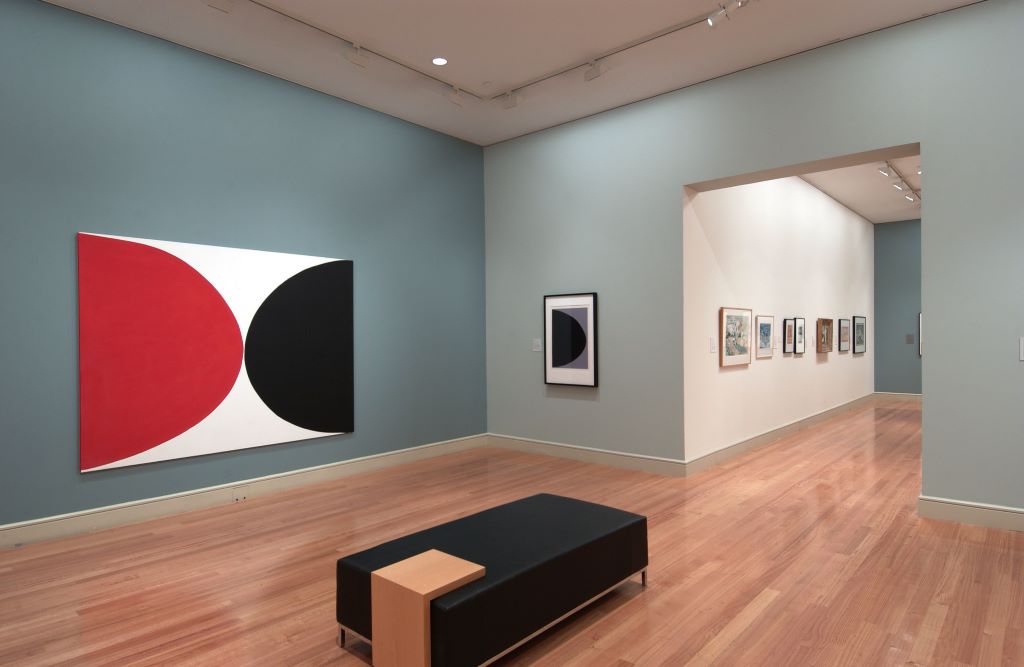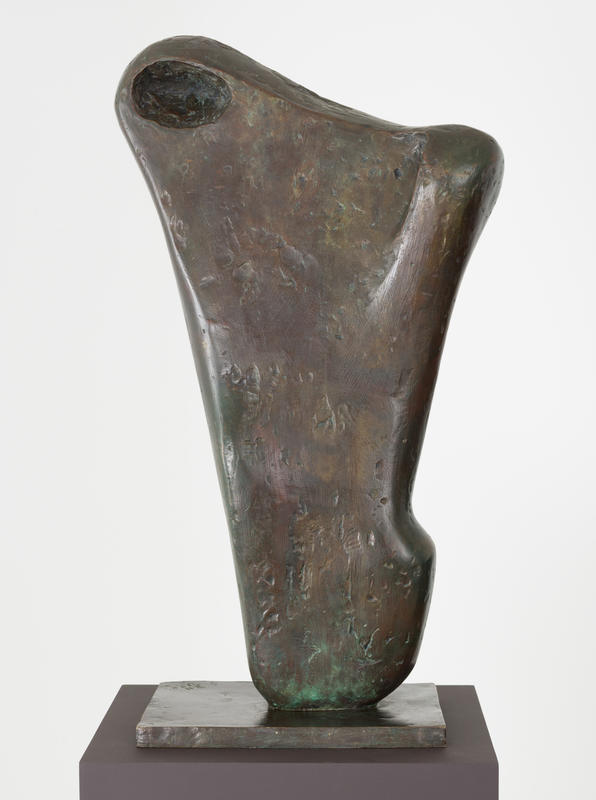—

exhibition Details
It hardly seems radical now, but when Barbara Hepworth began drilling through stone to create pierced sculptures, she was breaking new ground. Hepworth viewed the solid object and the spaces defined within it as having a balanced relationship. While much of Hepworth's work is resolutely abstract, her forms are a direct response to the stones and the swooping undulations and striations of the land forms of south-east England, where she spent much of her working life. On holiday on the coast of Cornwall, she said she had felt like a bird flying over magnificent sculptures, the shapes of the rocks and coast remaining clear in her mind. Her love of the landscape was instilled on childhood holidays exploring Yorkshire with her father, moving over its contours, touching, seeing and feeling through her hand and eye. Similar surfaces and shapes were transformed in the work of her husband, painter Ben Nicholson.
While the literal interpretation of the human form rarely emerged in Hepworth's work, it was the central focus for Henry Moore. He mapped the curves of the human body as if they were contours on a map, simplifying their outlines so that they appear monolithic in scale.
Whereas Moore's figures are always identifiably human, John Tunnard and Graham Sutherland created amorphous forms that lie, leap or dance in the air, while Paul Nash's stones and other natural detritus rise up to take on a character of their own.
Terry Frost created abstract forms in solid, bright colours defined by the reach of his body. Encouraged by Victor Pasmore, he spent hours studying Rubens at the National Gallery, drawn not only by the sensuality of his nudes but also by the abstract dynamics of his picture making.
The influence of British Modernism can be found in New Zealand artists, including Colin McCahon, Milan Mrkusich, Arnold Wilson, James Ross and Nelson Thompson. Taught by Henry Moore in London, Thompson described the drive for abstraction within Modernism; 'I sought to find the structural content in a chosen subject, searching out the essential forms and composing them harmoniously in a way that expressed a personal vision'.
- Date
- —
- Curated by
- Mary Kisler
- Location
- Main Gallery
- Cost
- Free entry
Related Artworks
Torso II (Torcello)
On display
Focal point
oil on board
Mackelvie Trust Collection, Auckland Art Gallery Toi o Tāmaki, purchased 1991
On display
Red and Black Linear
lithograph
Auckland Art Gallery Toi o Tāmaki, gift of the Institute of Contemporary Prints, 1976
Black on Mauve/Grey
screenprint
Auckland Art Gallery Toi o Tāmaki, gift of the Institute of Contemporary Prints, 1976
Winter Solstice
screenprint
Auckland Art Gallery Toi o Tāmaki, gift of the Institute of Contemporary Prints, 1976
Seated Figures and Ideas for Sculpture
lithograph
Auckland Art Gallery Toi o Tāmaki, gift of the Institute of Contemporary Prints, 1976
Two Opposing Forms
On display
December Forms
On display
Woman Seated on Fireside Stool
lithograph
Auckland Art Gallery Toi o Tāmaki, gift of the Institute of Contemporary Prints, 1976


























